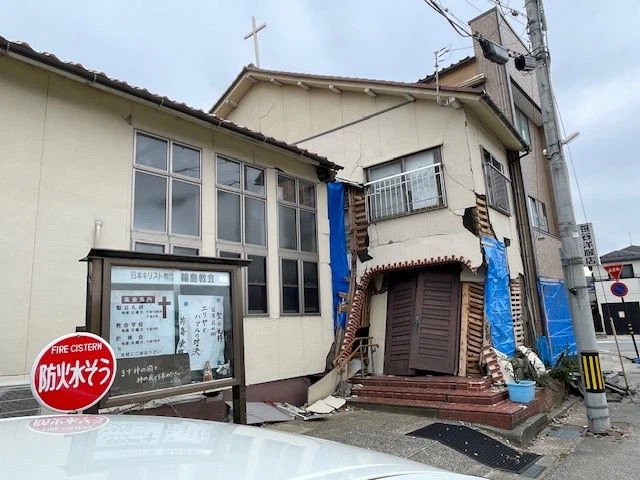One year after the Noto Peninsula earthquake, CWS Japan reflects on its efforts to support disaster-affected communities. By fostering local partnerships, CWS Japan continues to address the long-term challenges of disaster recovery while working to build a more resilient and inclusive emergency response system.
The CWS Japan team spent the New Year praying that no large-scale disasters would occur—in fact, the local news in Japan has featured disaster-related articles almost every day since the year began. As we mark the one-year anniversary of the Noto Peninsula earthquake, I’d like to look back on CWS Japan’s support activities on the Noto Peninsula and share the support that CWS Japan aims to provide to those who are vulnerable in disasters.
Impacts of Noto Peninsula Earthquake
It seems like just yesterday that a year ago on New Year’s Day, a large-scale disaster occurred on the Noto Peninsula and the New Year began on a somber note.
Immediately after the disaster, we received news from the United Church of Christ in Japan, a CWS local partner, that a local church had been impacted. At the time, the entire infrastructure in Oku-Noto was in a state of destruction. There was no accommodation, and many survivors moved to large-scale evacuation centers. Other organizations had to commute to the disaster site from Kanazawa, which took half a day.
Meanwhile, in the Noto Peninsula earthquake, 276 people were certified as having “disaster-related deaths” due to illness caused by fatigue and stress from evacuation, as of January 6, 2025. This figure is higher than the direct deaths caused by building collapses and exceeds the number of deaths in the 2016 Kumamoto earthquake.
The government is seeking to fully implement measures to reduce the risk of disaster-related deaths caused by deteriorating health due to prolonged evacuation lifestyles and has decided to submit an amendment to add welfare services to relief items, with the aim of strengthening support for the daily lives of disaster survivors who require special care and elderly people who are evacuating at home.
CWS Response and Ongoing Support
From the beginning of our response, I had decided that if I was going to support Noto, I would do so in Wajima City, where the disaster-stricken church is located. I headed to Kanazawa 18 days after the disaster and visited the representative of our local partner organization, which had begun distributing lunch boxes at the large-scale evacuation center that was opened in Kanazawa City. Soon after, we received a call from a church in the neighboring locality saying, “We’re going to Wajima to serve food!” and finally, in March, we started supporting Wajima.
After that, we rented meeting halls in elementary schools, evacuation centers and temporary housing in Wajima, and continued our activities of commuting from Fukui City to run a mobile cafeteria and café. During this time, we noticed something: we had seen a few male disaster survivors occasionally when we served meals at soup kitchens, but when we shifted to café activities for the purpose of socializing, we saw none at all. The participants who gathered at the café in the meeting hall were all elderly women, so much so that it seemed as if no men were living in the temporary housing.
Recently, there has been a nationwide increase in children’s cafeterias, cafés and other activities that provide a place for children to gather, but as far as I know, the overwhelming majority of volunteers and users are women. It made me wonder, where on earth are the men?
CWS Japan’s Challenge
Many people are experiencing a loneliness epidemic. In the first half of 2024, almost 40,000 people died alone in their homes in Japan and, according to a recent report, the gender ratio of lonely deaths is overwhelmingly higher for men, at 83.5% compared to 16.5% for women.
CWS Japan suspects the problem extends beyond urban areas to disaster-stricken areas as well, and the team will begin addressing the issue at the Community Cafe that we currently operate in Okubo, Shinjuku Ward.
We believe that this movement is in line with CWS Japan’s goal of supporting those vulnerable in disasters. Our everyday activities of identifying potential disaster-vulnerable people, providing lifestyle consultation and follow-up, accompanying support and networking with welfare workers can also be applied in times of emergency. We are building up a track record of these activities every day, and our team includes certified social workers who are also accumulating specialized knowledge.
Through building connections with local partners in the region, CWS Japan aims to create a robust emergency preparedness, response and recovery network to better support communities in disaster-stricken areas. These efforts will ensure more families can stay safe in the face of disasters and rebuild when they strike.
Yukiko Maki is a Program Director with CWS Japan. To learn more about the work of CWS Japan, visit their website (in Japanese) or click here.


